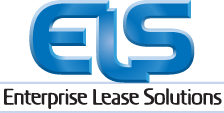What’s the Best Way to Automate Your Billing and Collecting Process?
Billing and collecting efforts sometimes seem like the bane of our existence. As a lessor or originator, you know the ability to successfully invoice your customers and collect on your accounts receivable is a key performance indicator. How can an automated billing and collecting process help you?
First, understand that automating the billing and collecting process does not mean eliminating human contact. It means automating certain parts of the billing and collecting process, to allow your team to focus on the human aspect of the process.
Technology can generate electronic invoicing, payment reminders, and past due notifications. This will allow your team to focus its efforts on customer outreach, to understand the cause of payment delay, and create a plan with the customer to collect the outstanding amount.
It’s critical to create a collections culture which communicates the importance of timely payment to our customers, while continuing to foster a relationship of mutual respect and value.
To help build that culture, here are some principles that your billing and collecting team might find useful to keep in mind:
If you want to learn more about automating your billing and collecting process, feel free to contact us.
